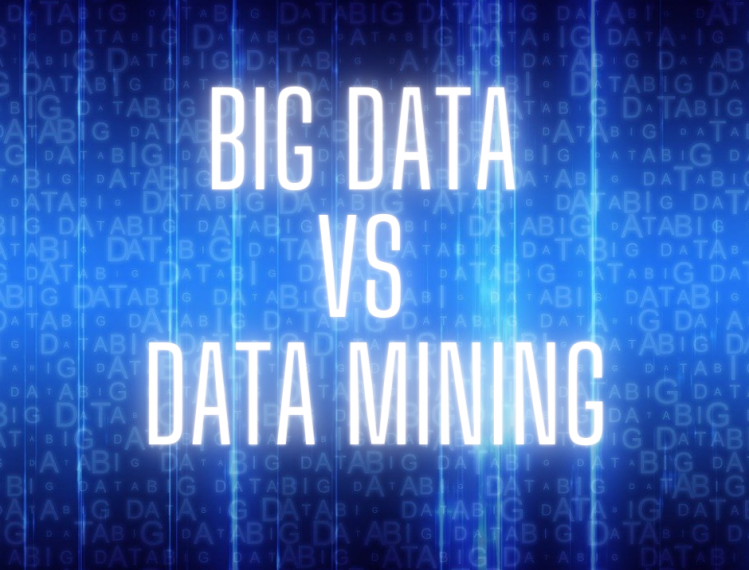Are you eager to learn about big data vs data mining? Big data and data mining are two distinct terms serving different purposes. They both used large datasets to extract meaningful insights from messy data. The world is powered by big data, forcing organizations to seek experts in data analytics capable of processing large volumes of data. The global market for big data analytics will grow exponentially, with an estimated value of over 655 billion dollars by 2029.
Peter Norvig states, “More data beats clever algorithms, but better data beats more data.” In this article, we will explore big data vs data mining, its types, and why they are significant for businesses.
What is Big Data?
It refers to a large volume of data that can be structured, semi-structured, and unstructured, which grows exponentially with time. Due to its large size, none of the traditional management systems or tools can process it efficiently.
The New York Stock Exchange generates one terabyte of data daily. Moreover, Facebook generates 5 petabytes of data.
The term big data can be described by the following characteristics.
Volume refers to the size of the data or the amount of data.
Variety refers to the different types of data like videos, images, web server logs, etc.
Velocity shows how fast data is growing in size and data is exponentially increasing at a fast rate.
Veracity means the uncertainty of data, like social media means if the data is trustworthy or not.
It refers to the market value of the data. Is it worth generating high revenue? Being capable of pulling insights and value from big data is the ultimate goal of organizations.
Why is Big Data Important?
Organizations use big data to streamline operations, provide good customer service, create personalized marketing campaigns, and take other essential actions that can boost revenue and profits.
Let’s look at some common applications.
- Medical researchers employ it to identify disease signs and risk factors and help doctors to diagnose illnesses in patients.
- The government uses it to prevent crimes, fraud, emergency response, and smart city initiatives.
- Transportation and manufacturing companies optimize delivery routes and effectively manage supply chains.
What is Data Mining?
This process involves analyzing data and summarizing it into meaningful information. Companies use this information to increase their profits and reduce their operational expenses.
Need for Data Mining
Data mining is essential to sentiment analysis, credit risk management, churn prediction, price optimization, medical diagnoses, recommendation engines, and much more. It is an effective tool in any industry, which includes retail, wholesale distribution, the telecom sector, education, manufacturing, healthcare, and social media.
Types of Data Mining
The two major types are as follows.
Predictive Data Mining uses statistics and data forecasting techniques. It is based on advanced analytics that utilizes historical data, statistical modeling, and machine learning to predict future outcomes. Businesses use predictive analytics to find patterns in data and identify opportunities and risks.
Descriptive Data Mining summarizes the data to find patterns and extract significant insights from data. A typical task would be to identify products that are frequently purchased together.
Data Mining Techniques
A few techniques are discussed below.
In the association, we identify patterns where events are connected. Association rules are used to figure out correlations and co-occurrences between items. Market basket analysis is a well-known technique of association rule in data mining. Retailers use it to nurture sales by understanding customer purchasing patterns.
Clustering analysis means figuring out the group of objects that are similar to each other but different from the object of other groups.
Differences – Big Data vs Data Mining
| Terms | Data Mining | Big Data |
|---|---|---|
| Purpose | The purpose is to find patterns, anomalies, and correlations in large stores of data. | To discover meaningful insights from large complex data. |
| View | It is a small picture of data or a close-up view of data. | It shows a big picture of data. |
| Data Types | Structured, relational and dimensional database | Structured, semi-structured, and unstructured |
| Size of Data | It uses small datasets but also utilizes large datasets for analysis. | It uses a large volume of data. |
| Scope | It is part of the broad term “knowledge discovery from data”. | It is a widespread field that uses a wide range of disciplines, approaches, and tools. |
| Analysis Technique | Uses statistical analysis for prediction and identifying business factors on a small scale. | Uses data analysis for prediction and identifying business factors on a large scale. |
Future of Big Data vs Data Mining
For companies, the ability to handle big data will become more challenging in the upcoming years. Thus, businesses must consider data a strategic asset and utilize it properly.
The future of data mining looks astonishing and lies in “smart data discovery,” the notion of automating the determination of patterns and trends in large datasets.
Do you want to learn data science and AI? Check out more blogs on unite.ai and nurture your skills.
Credit: Source link




















